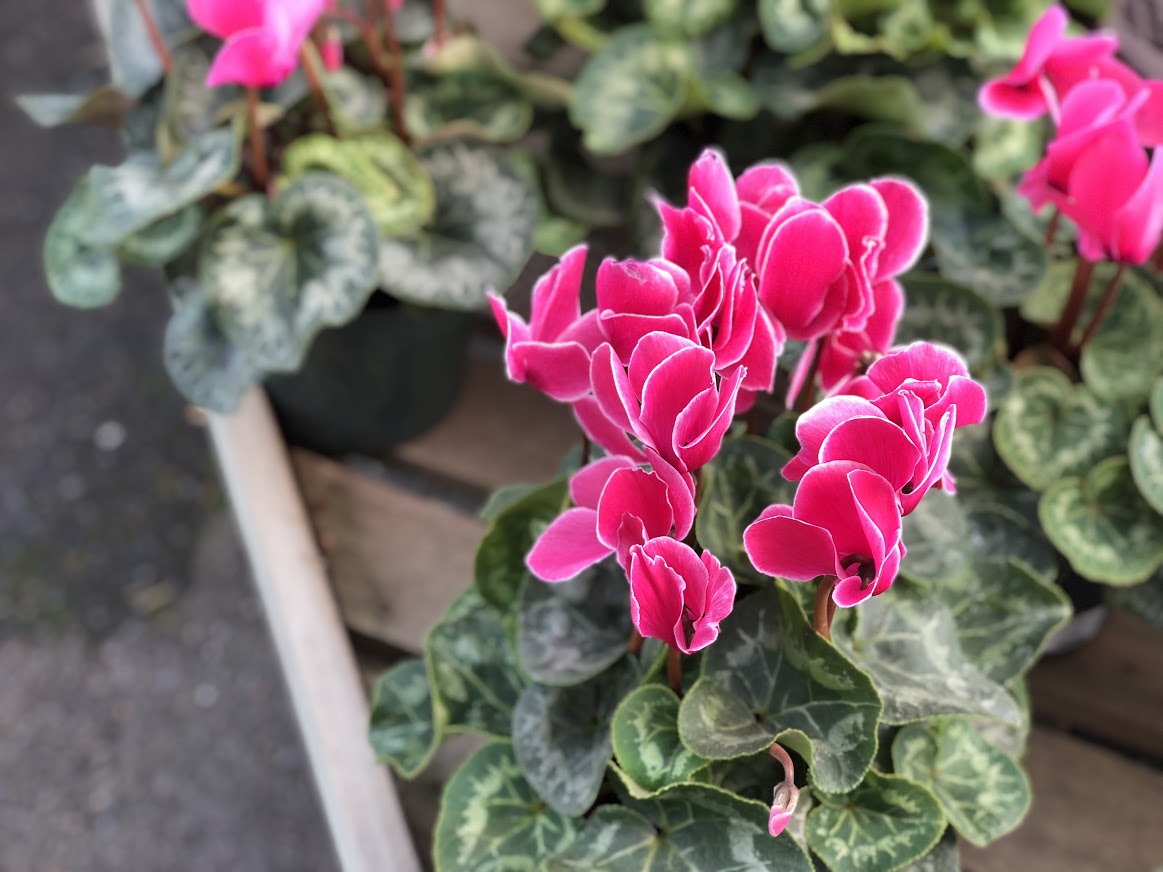Soon Garden’s Gate will be transformed by our Bedding Department. There, you will find yourself lost amongst vibrant cyclamen, amaryllis, Christmas cactus, fragrant Paperwhites, ivy topiaries and more!
As of now, we have Cyclamen galore! Resembling a shooting star and typically blooming in shades of white, maroon, pink, purple and red with often two-tone or ruffled petals, it’s one of our most popular flowers this season! And deer resistant too!
Cyclamen are tubers that go dormant in the summer (if not receiving adequate amount of water) then the fall rains will bring forth new leaves. As the days shorten, the buds will begin to form.
Adorn your table centerpiece with one of stunning cyclamen, just ensure your container has good drainage and plenty of good bright light. Remember that they like it a little bit cooler so a north-facing window or cooler part of your home is ideal.
Outdoors cyclamen like shady, woodland areas but also do well in containers. They are not particular about soil types and do not mind root competition. Therefore planting them under trees and conifers for a pop of color works wonders.
They like to be watered well and then left to dry out. If kept too moist, cyclamen can get a fungus known as Botrytis or gray mold, and the base of the stems turn soft and mushy and the leaves fall off easily. Fertilize your cyclamen with Master Bloom 0-10-10 or E.B. Stone Organics Ultra Bloom 0-10-10 every month during the growing season.
Cyclamen are one of the few winter blooming plants that are deer resistant, and add that spark of bright color during those dreary winter days - so plant away!
Stop in and see what color winter has to offer your garden today!





















